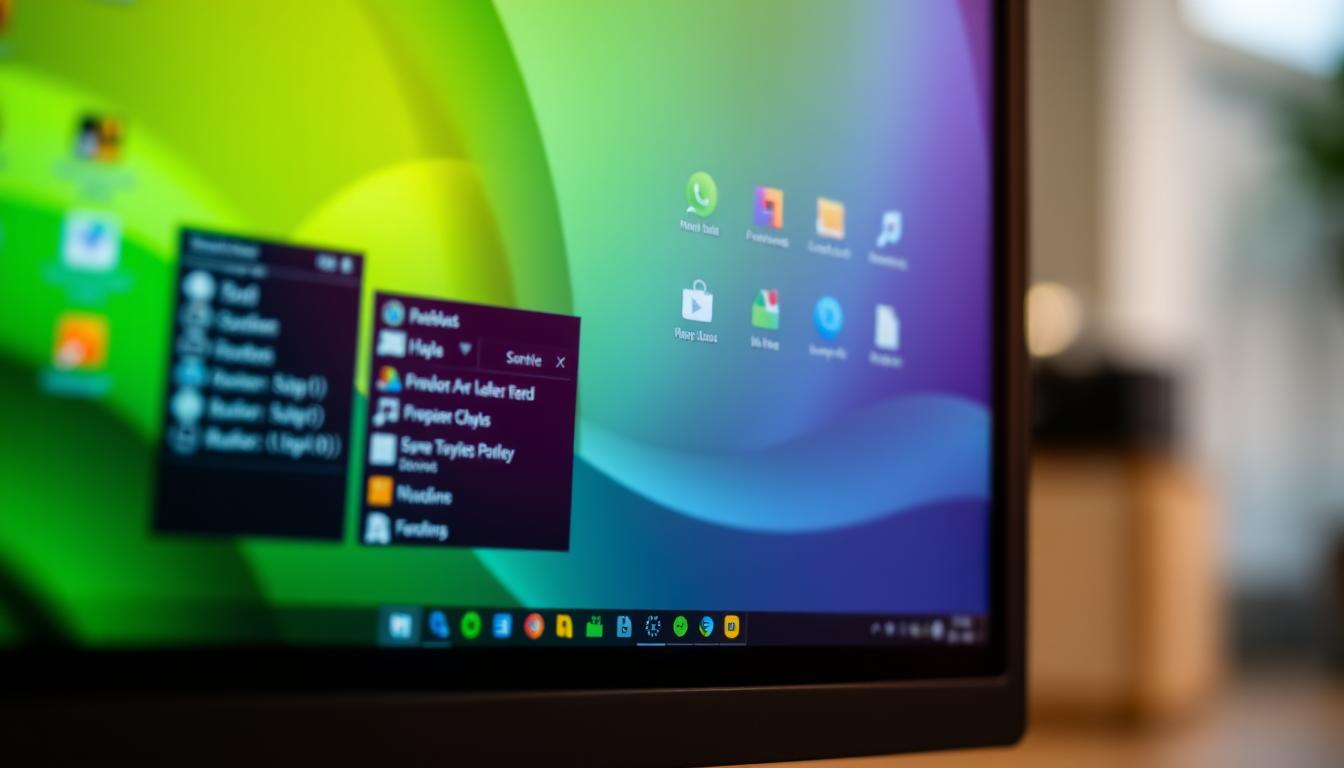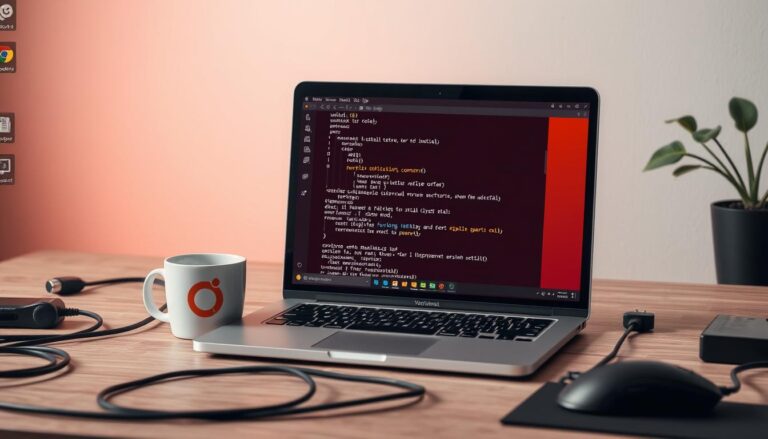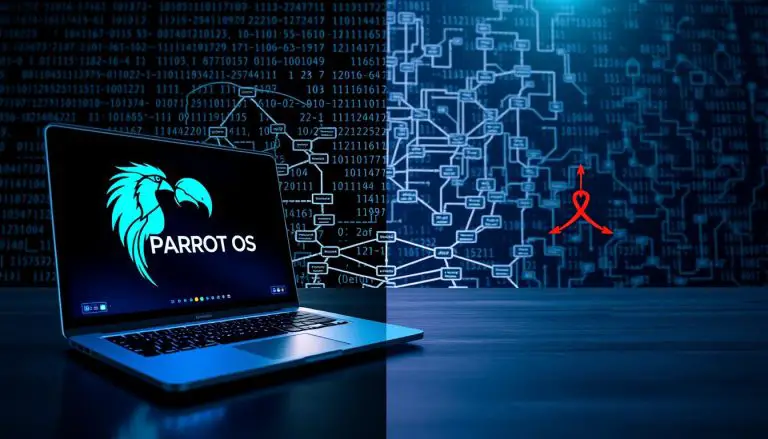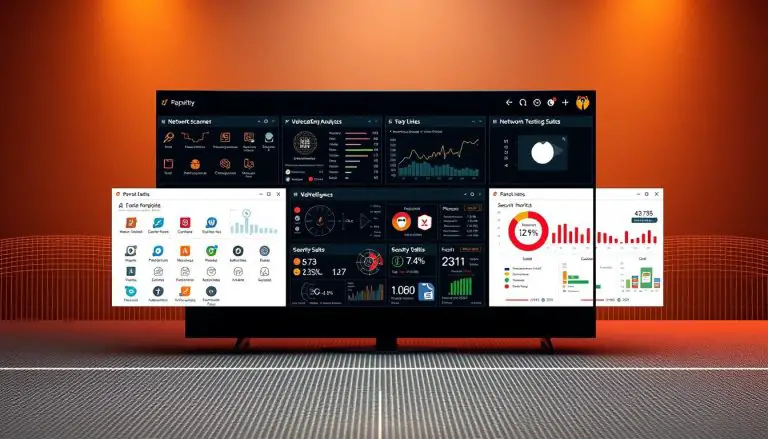Discover What is Parrot Linux: A Comprehensive Overview
Could your current operating system be holding you back from reaching your full potential in cybersecurity? Many professionals struggle with fragmented toolkits and complex setups that slow down their workflow. We introduce a specialized linux distribution that combines powerful security testing capabilities with everyday usability. This platform serves security experts, developers, and privacy-conscious individuals who demand a robust environment for their work. Emerging in 2013 from the vision of Lorenzo Faletra, this distribution has evolved into a comprehensive solution. It caters to multiple user demographics, from seasoned cybersecurity professionals to students entering the information security field.
This isn’t just another penetration testing platform. It’s a versatile operating system that balances professional security tools with the functionality needed for daily computing tasks. The distribution comes pre-loaded with over 600 security tools, creating a complete arsenal for IT security operations.
Our guide will explore every aspect of this platform, from its historical background to installation procedures. Understanding what this system offers helps professionals make informed decisions about their security testing and development needs.
Key Takeaways
- Specialized operating system designed for security testing and daily computing
- Based on Debian Stable, ensuring reliability and compatibility
- Includes over 600 pre-installed security and privacy tools
- Serves both cybersecurity professionals and beginners in the field
- Balances powerful capabilities with user-friendly accessibility
- Free and open-source platform developed by a community interest company
- Versatile enough for forensics, vulnerability research, and anonymous browsing
Introduction to Parrot Linux
Emerging from a community forum called Frozenbox, this distribution started as a passion project in 2013. Lorenzo Faletra launched the first public version on April 10th, creating what would become a cornerstone for cybersecurity professionals.
Background and History
The platform’s origins reflect an interesting blend of playful creativity and serious purpose. The name itself came from the idea that “every pirate needs a parrot,” symbolizing the partnership between security experts and their tools.
This grassroots effort quickly gained traction within the security community. What began as a single developer’s vision expanded into an internationally recognized operating system used by thousands.
Community and Governance
Today, the project operates under Parrot Security CIC, a community interest company registered in the UK. This governance structure ensures stability while maintaining the distribution’s open-source ethos.
The development community includes security experts, digital rights advocates, and Linux enthusiasts worldwide. This diverse collaboration results in a system that addresses various security needs across different environments. You can learn more about this unique operating system’s foundation through official documentation.
Continuous improvement remains central to the project’s mission. Contributors regularly update tools and features based on real-world testing scenarios and emerging security challenges.
What is parrot linux: Key Features and Benefits
This specialized operating system stands out through its balanced approach to security tools and daily functionality. We designed a platform that serves professionals across different skill levels.
Comprehensive Security and Privacy Tools
The platform includes over 600 pre-installed security tools for comprehensive assessments. These cover penetration testing, digital forensics, and cryptography operations.
Privacy protection is built into the core system architecture. Tools like TOR and Anonsurf provide system-wide IP hiding for maximum anonymity.
Sandboxing capabilities through Firejail integration add an extra security layer. This protects the host environment during security research and testing.
Development and Daily Usability
Beyond security, the system offers a complete development environment. It includes compilers, interpreters for multiple languages, and modern IDEs.
The lightweight design ensures strong performance even on minimal hardware. This makes the platform accessible for various user scenarios.
Package management flexibility supports APT, Snap, and Flatpak repositories. This provides access to extensive software libraries for diverse needs.
Daily productivity features include office software and media applications. Professionals can handle entire projects from testing to reporting on one system.
Diverse Editions and User Experiences
The platform offers multiple specialized versions tailored to different professional needs and technical requirements. This flexibility ensures each user can find the perfect match for their specific workflow.
Security, Home, and Architect Editions
We designed three primary editions to serve distinct user groups. The Security Edition represents our flagship version with complete penetration testing tools. This security edition is ideal for cybersecurity professionals conducting comprehensive assessments.
The Home Edition provides a lighter alternative for daily computing tasks. This home edition maintains privacy features while removing specialized security tools. It’s perfect for developers and privacy-conscious individuals.
For advanced users, the Architect Edition offers a minimalist base system. This version allows complete customization from the ground up. Users select only the components they need for unique workflows.
Specialized editions include Air Edition for wireless security and IoT Edition for embedded systems testing. The platform supports various deployment formats including virtual machines, Raspberry Pi, and cloud environments. This variety ensures the right choice for every user experience.
Each edition maintains the core philosophy of transparency while providing efficient automation. You can explore all available options on the official Parrot Security website.
Security Tools and Digital Forensics Capabilities
Penetration testing workflows demand specialized tools that are ready for immediate deployment in security assessments. We designed this platform with comprehensive security capabilities for professionals who need reliable performance.

Pre-installed Penetration Testing Tools
Our security edition includes industry-standard penetration testing utilities. The Metasploit Framework handles exploit development while Nmap provides network discovery. Wireshark offers deep packet analysis for comprehensive security assessments.
Web application security benefits from Burp Suite’s vulnerability scanning. Wireless network testing utilizes Aircrack-ng for encryption strength evaluation. Password security assessment relies on John the Ripper for authorized recovery operations.
Forensics Utilities and Safe Evidence Handling
Digital forensics operations require careful evidence preservation. We implemented multiple safeguards including kernel-level automount disabling. Storage devices are recognized but not automatically mounted.
Forensic specialists use Autopsy for disk analysis and Foremost for file recovery. Volatility handles memory forensics while maintaining chain of custody. These tools provide immediate access to professional-grade capabilities.
The system’s forensics-safe design prevents accidental evidence modification. Redundant policies ensure data integrity during investigations. This approach supports reliable cybersecurity practices across various environments.
Parrot Linux vs. Other Linux Distributions
The cybersecurity landscape features several specialized distributions, but two consistently stand out for penetration testing professionals. We often encounter questions about which platform better serves specific security workflows and operational requirements.
Comparing Parrot Security with Kali Linux
Both platforms serve the ethical hacking community with distinct approaches. Parrot Security emphasizes lightweight performance and integrated privacy tools as standard features.
The default MATE desktop environment provides faster, cleaner operation compared to alternatives. This contributes to superior performance on varied hardware configurations.
Kali Linux excels in enterprise environments with heavy Metasploit Framework usage. Its optimization for large-scale penetration testing makes it ideal for organizational deployments.
Professionals often maintain both distributions in their toolkit. The choice depends on whether priority lies with resource efficiency or enterprise-scale capabilities.
Each distribution serves valuable roles in security testing workflows. Understanding their strengths helps professionals make informed decisions about their operational needs.
Installation, Customization, and Daily Use
Getting started with this powerful security platform is a straightforward process designed for accessibility. We ensure a smooth transition into the operating environment, whether you are setting up a dedicated testing machine or integrating it into your daily workflow.
Step-by-Step Installation Guide
Our installation begins at the official Parrot OS website. Here, you select the correct ISO image version for your computer’s architecture and intended use case.
Creating bootable media is the next step. Windows users can rely on Rufus, while Linux users have tools like Etcher or the ‘dd’ command. This prepares a USB drive to launch the installer.
The installation procedure follows standard conventions. After booting from the USB, you’ll select your language, configure disk partitioning, and complete the setup. A quick reboot welcomes you to the new system.
To ensure smooth operation, verify your hardware meets these requirements:
- Minimum: 2GB RAM, 20GB storage, 1GHz dual-core processor
- Recommended: 8GB RAM, 60GB storage, 2GHz quad-core processor for optimal performance
Customizing the MATE Desktop Environment
This operating system ships with the MATE desktop environment by default. It provides a clean, traditional interface that balances functionality with efficient resource use.
For customization, we include the MATE Tweaks tool. This utility lets you modify the desktop’s appearance, panel layouts, and window behavior. You can create a personalized environment that boosts productivity for specific tasks.
Keeping your system current is crucial. Regularly run the sudo parrot-upgrade command. This update manager ensures all security tools and system components receive the latest patches.
While MATE is the default, experienced users can install alternative desktop environments. This flexibility allows you to configure the operating system precisely to your needs, similar to the customization options available in other distributions like Linux Mint.
Optimizing Your Environment: Tips for Cybersecurity and Privacy
Maximizing the potential of your security-focused setup requires understanding its advanced privacy features. We designed these capabilities for professionals who demand robust protection in their daily operations.
Leveraging Anonymity and Cryptographic Tools
Anonsurf integration provides system-wide IP hiding for complete anonymity. This routes all network traffic through anonymity networks, protecting user identity across applications.
Built-in TOR browser and OnionShare utilities enable anonymous web browsing and secure file sharing. These tools are vital for journalists, whistleblowers, and digital activists requiring secure communication channels.
Pre-installed cryptographic tools include GPG for email encryption and VeraCrypt for creating encrypted volumes. These provide immediate access to industry-standard privacy protection mechanisms.
Establish a regular update routine using the APT package manager and specialized update commands. This ensures security patches and tool updates maintain optimal performance.
Use virtual environments through Firejail sandboxing when testing potentially harmful software. This isolation prevents accidental compromise during security research.
Invest time in learning command-line tools, as many powerful utilities operate through terminal commands. Mastery significantly enhances effectiveness for cybersecurity professionals.
This platform serves diverse communities beyond traditional security testing. Developers benefit from secure coding environments, while students gain hands-on experience with professional tools.
Always remember that powerful security testing capabilities require responsible usage. These tools must only be used on systems where proper authorization has been obtained.
Conclusion
For professionals navigating the demands of modern cybersecurity, the choice of platform significantly impacts workflow efficiency and operational effectiveness. We’ve explored how this security-focused operating system bridges specialized testing needs with daily computing requirements.
The distribution’s comprehensive tool collection, lightweight performance, and privacy-by-design philosophy create an exceptional environment. It serves diverse user groups from ethical hacking practitioners to privacy-conscious individuals.
Key features like the MATE desktop environment and multiple edition versions provide flexibility for different workflows. This versatility eliminates the need for constant system switching between specialized environments.
Robust community support ensures continuous evolution to address emerging security challenges. The APT package manager delivers immediate access to professional-grade tools, similar to capabilities found in other linux distributions.
Whether for penetration testing, digital forensics, or secure development, this platform delivers the necessary tools and performance for success in today’s complex security landscape.
FAQ
What is the main difference between the Security and Home editions?
Can I use this operating system as my primary desktop environment?
How does the apt package manager work within the system?
Is this distribution suitable for beginners in ethical hacking?
How does the performance compare to other Linux distributions for security tasks?
What desktop environments are available?
What tools are included for maintaining anonymity online?
- About the Author
- Latest Posts
Mark is a senior content editor at Text-Center.com and has more than 20 years of experience with linux and windows operating systems. He also writes for Biteno.com






